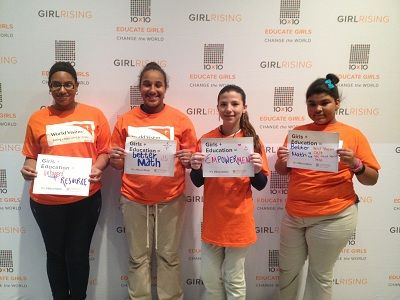
The U.S. Census Bureau determined that 25.1 percent of African-American households and 29.2 percent of households with children are food insecure.
"While there are indicators that the economy is recovering, children and ethnic minorities that were disproportionately impacted during the recession continue to struggle and lag behind in the recovery," explained Leonetta Elaiho, director of Youth and Community Engagement, U.S. Programs at World Vision, in an email statement to The Christian Post.
The U.S. average of households with children who are food insecure is lower, but still high - up to 20.6 percent.
"Food insecurity is one of the clear ways that the impacts of poverty show up for families. The high cost of food, lack of accessibility and other competing financial pressures leave families with difficult decisions to make and stark realities to face," Elaiho added to CP.
WorldVision.org, a Christian humanitarian organization working to tackle poverty and injustice, says that it seeks to meet immediate needs and create long-term solutions to address this problem.
"Through relief and charity efforts along with advocacy and development there is a part for everyone to play in reducing hunger for children in America," Elaiho urged.
The high rate of children going hungry in America is notable, especially considering that the U.S. regularly ranks high in global lists measuring quality of life. In the most recent human-development index released in March by the Human Development Report Office, the USA ranked at number 3, behind only Norway and Australia.
Yet U.S. families with children continue struggling despite steps being taken to negate the economic recession that started late last decade. According to the U.S. Census Bureau, in Iowa, Ohio, Michigan, Wisconsin, Indiana, Kansas, Minnesota, Oklahoma, and Pennsylvania, the African-American child poverty rates are close to double and sometimes triple the national child poverty rate.
"In a land of plenty, it is unacceptable that so many of our children go hungry," Bishop Don Dixon Williams, associate for racial-ethnic outreach at Bread for the World, told the Houston Forward Times.
"With figures this alarming, we must ask ourselves why people of color tend to suffer more than others. And we must tell lawmakers to take actions that do not hold hungry black and brown children responsible for the nation's financial gaps."
A number of organizations are working hard to erase this inequality and fight for every child in America.
Hilary Hilpert, the Marketing Project administrator of the 30 Hour Famine project, shared with CP that "as Christians and as human beings, we're called to love our neighbors as ourselves, care for the poor, the sick, and the brokenhearted."
Hilpert noted that many people still believe that hunger is too big of a mountain for the average person to tackle, and the solution will always be beyond reach.
"We've seen enough statistics, and heard enough stories of triumph to know that this isn't true. We're all called to give, it's just a question of what that calling looks like for you. We have former 30 Hour Famine participants who are now aid workers in Africa, and others who have gone on to study global development and relief work. Taking the time to simply learn can really inspire some bigger actions," she said.



The U.S. Census Bureau determined that 25.1 percent of African-American households and 29.2 percent of households with children are food insecure.
That would have to be the broadest, undefined statement I have seen in months. Quantitative statements with non quantifiable nouns are used way too often in the media.
62% of all people who wear blue tops know that!